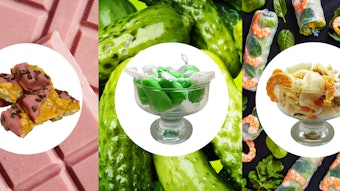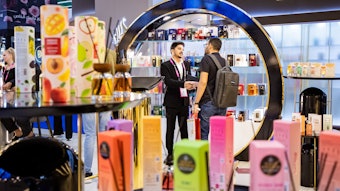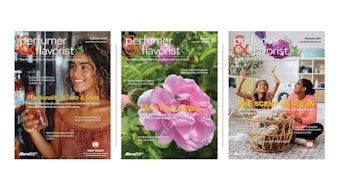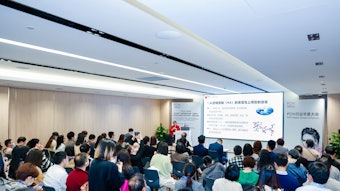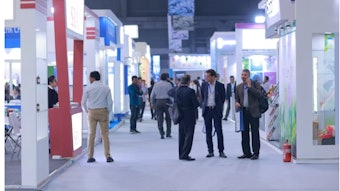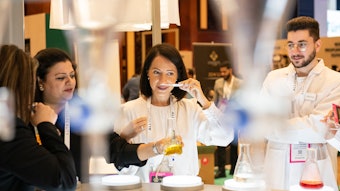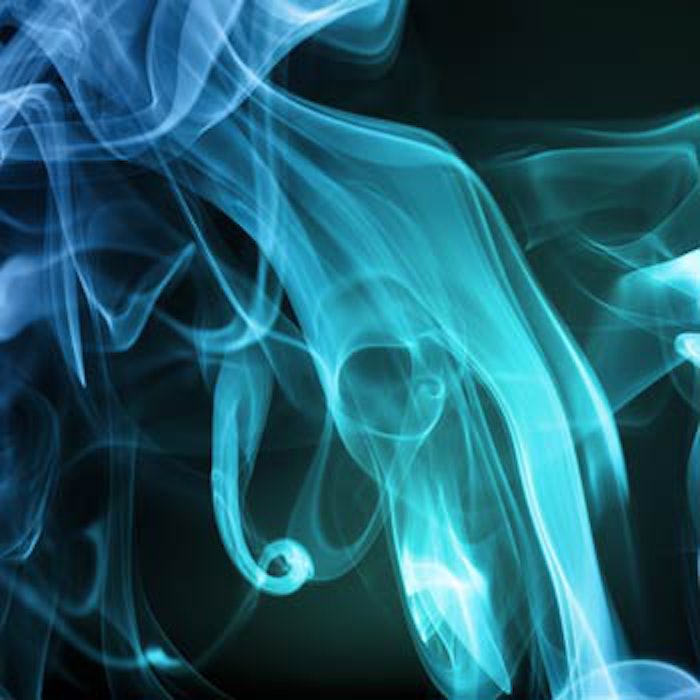
"Ooh, smell this!" she delights, twisting the cap off a new shampoo discovery, and leaning into her shopping companion. "It smells so good. It reminds me of (pause) something ..."
We're all consumers, and undoubtedly can relate to this experience. Especially the sense of knowing you know something, but being unable to make the connection. That's the same feeling I had when my career editing articles for cosmetic product developers expanded to include flavor and fragrance. I knew I knew something, but wasn't sure what. Or how it related. Sort of like trying to pin down an "unscented" fragrance.
That's when Perfumer & Flavorist (P&F) editor in chief Jeb Gleason-Allured suggested I visit a local fragrance company to get a better "scents" of the art and science of fragrance development. As it just so happened, at the time, local flavor and fragrance company Orchidia was offering a free "Fragrance 101" day-long class, complete with a facility tour. The class mainly was intended for clients, but they completely welcomed a couple of "newbie" P&F editors to their fragrance world. So together, Jennifer Novoseletsky, our assistant editor, and I followed our noses.
Fragrance 101
Presentations included discussions on basic fragrance components and steps for combining them in the traditional "pyramid" of top, middle and base notes. They also reviewed technical terms, fragrance characteristics, the creative process and regulatory constraints.
Perfumer Renata Girnius kicked off the conversation, describing the history of perfumery and relating it to music. “The perfumer’s ‘organ’ consists of all these individual bottles or ‘notes,’” she said, showing a photograph of a perfumer’s work station. “These notes are layered by the perfumer or ‘composer,' and the perfumer must balance cost and time with quality.”
Essential Oils
Cara Rogers, junior perfumer, presented next on essential oils and techniques for producing them:
- distillation
- expression
- solvent extraction
- supercritical fluid extraction (SFE) and
- enfleurage.
“For solvent extraction, hexane is used to dissolve relevant fragrance components from the source plant material,” explained Rogers. “This is concentrated into a concrete which is then mixed with ethanol and chilled to remove the waxes before being concentrated again to give an absolute.” She compared this process to SFE using CO2 gas, which is very similar to solvent extraction but produces solvent-free extracts. “I think this process is the future [for extract development],” she said—noting that currently, however, SFE is much more expensive.
Throughout the presentation, Orchidia team members provided blotters to which samples produced by each method were applied. The audience compared ginger SFE versus ginger distilled, for example, and the different profiles elicited by each.
According to Rogers, essential oils are irreplaceable, and cost depends on a diverse list of variables, which includes crop availability, essential oil content and yield or dollar amount per pound, harvest or soil type, cultivation method and method of extraction.
Aroma Chemicals
Next, perfumer Namondo Ndobedi dove into natural and synthetic aroma chemicals, describing three types of aroma chemicals:
- natural, which are produced by distillation, fermentation or maceration;
- natural-identical, which are chemically identical to naturally derived materials; and
- artificial/synthetic.
Ndobedi observed, “There are no naturally derived amber or musk materials. Anyone who tells you this is lying. There also currently are no equivalents to natural fruit oils.”
Perfumer Training
For the last discussion of the morning, Diana Kusmierz, a perfumer in training, spoke on the terminology used to describe fragrance odors, challenging attendees to describe sample blotter scents in three words or less. Samples included stinky cheese, patchouli and banana; one in particular reminded me of a Red Bull energy drink.
Kusmierz's presentation included how Orchidia trains its perfumers.
“’Baby perfumers’ take materials and smell them, then compare notes with experienced perfumers to learn what they picked up on and what they missed.” She explained that through repetition, they learn how to classify scents.
Jim Powell, perfumer and director of R&D, chimed in, “It’s like reading a book. You learn that those scribbles on a page are words, like you learn what scents your nose is detecting.”
Lunch came next, followed by a tour of Orchidia’s facilities, for which we all gussied up in hair nets. For those who've never taken a tour like this before, note that closed-toe shoes are recommended; thanks to me and one other attendee, our route was slightly altered. Sorry, classmates!
Fragrance Stability
Powell covered concerns over fragrance stability. “The oxidation chain moves from alkane to alcohol to aldehyde to acid,” he said, explaining, “this is why standard antioxidants including [butylated hydroxytoluene] (BHT), [butylated hydroxyanisole] (BHA) and α-tocopherol, the ‘natural’ option, are used to counteract these effects.” He also discussed the use of EDTA as a chelating agent to control metal ions that cause discoloration.
Formulating with Fragrance
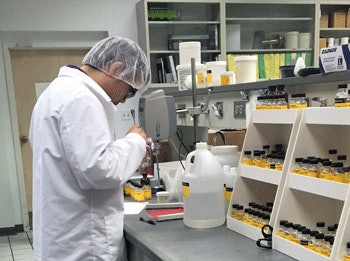
Regulation Considerations
Rounding out the day, John Little, junior perfumer, spoke on everyone's "favorite" topic regarding fragrance: safety and regulations, which I found to be not unlike cosmetic regulations—although seemingly much more well-defined.
“Regulations force companies to follow the same rules,” he said, adding that regulations are intended to ensure safety. “[The International Fragrance Association] (IFRA) is the regulatory body of the fragrance world and its rules are globally accepted,” he explained. “RIFM, or the Research Institute for Fragrance Materials, is the scientific arm of IFRA.”
Although the cosmetics industry is self-regulated, the RIFM arm seems parallel to the U.S. Food and Drug Administration's Cosmetic Ingredient Review (CIR) expert panel.
RIFM determines what materials are prohibited, restricted or given specifications (i.e., for given applications). The expert panel of RIFM consists of dermatology, toxicology, pathology and environmental scientists, which again is very similar to the CIR expert panel for cosmetics.
Additional regulation-relevant terms Little defined included:
- GRAS: Generally Recognized As Safe, for ingredients used in food products or lip balms;
- QRA: Quantitative Risk Assessment;
- CARB: the California Air Resource Board; and
- VOC: Volatile Organic Compounds.
He ended with a mention of the European Union’s allergen list of 26 materials which, when they are contained in a product at certain levels, must be included on a product label. “At levels greater than 0.001% in leave-on products, or 0.01% in rinse-off products, these materials must be included on the label.”
From the top of the day, evoking vivid aromatic sensations, to the bottom, settling into regulatory reality, the overall experience was a well-balanced accord.
